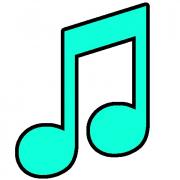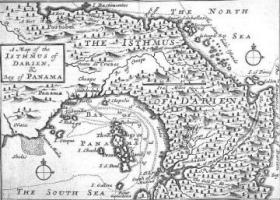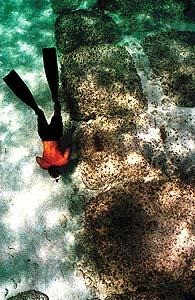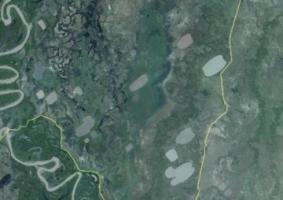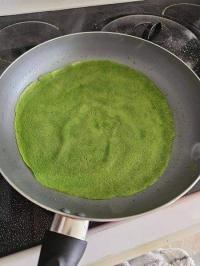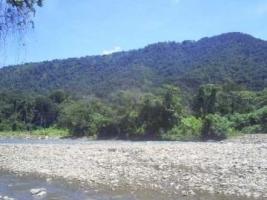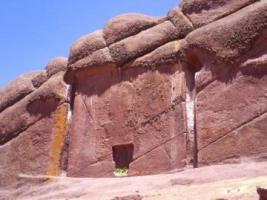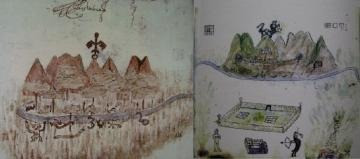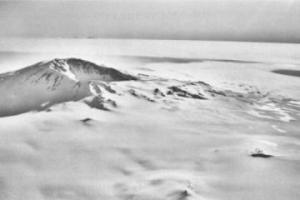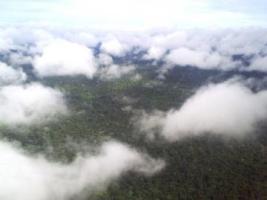Copy Link
Add to Bookmark
Report
The Sound Site Newsletter Issue 07

-------------------------------------------------------------------------
| The Sound Site Newsletter |
| |
| Issue #7 September/October (U) |
-------------------------------------------------------------------------
| Copyright (C) 1991 by David Komatsu All Rights Reserved. |
-------------------------------------------------------------------------
| This newsletter may be distributed to bulletin boards, FTP site or |
| other media as long as there is no charge to receive the newsletter |
| o Next Issue due: November 1991. |
| o Submission of material deadline: October 31, 1991. |
-------------------------------------------------------------------------
Note from the Editor
--------------------
This is the seventh edition of the Sound Site Newsletter. Due to the
start of a new school year and also me relocating back to Hawaii and
starting a new job I have decided to combine the September and October
issues into one. This is a very valuable edition since it will contain
a Frequently Asked Questions List which will not only answer a lot of
questions about sounds but also provide you with a partial index to
past sound letters.
We are looking for column authors as well as a programming expert to
start a programmers corner in the Sound Newsletter. If you would
like to do this or add any other input please contact me.
Also please not my address change. Please send mail to either of the
two accounts listed below:
sound@ccb.ucsf.edu
davek@uhunix.uhcc.hawaii.edu
Our next issue will be another double issue for the Nov/Dec period
released in early November. Be looking for it at a BBS or FTP site
near you.
The Sound Newsletter is also posted to comp.sys.ibm.pc.misc,
comp.sys.mac.misc and rec.games.misc on USENET. See bottom for list
of BBS and FTP sites that back issues are available from.
Special thanks to DALE CHUN for managing our huge mailing list. Dale
has put in a lot to time to keep it in order.
-----> Dave
In this issue
-------------
o Do you want to announce a new product? Simtel Problems
o Sound Bits
o ModEdit - Finally a way to edit your own MOD files
o Modplay - Notes on V2.00 the newest release
o Product Reviews: Sound Blaster vs Adlib Gold head to head
o Tidbits
o A quick look at Microsoft Multimedia
o FAQL - Answers to your most commonly asked questions
o Anonymous FTP sound Sites
Do you want to announce a new product?
---------------------------------------
If you have written a sound related program that is SHAREWARE,
FREEWARE, or PUBLIC DOMAIN and would like to announce your program
contact us. We can feature it and help distribute it. You can mail
me at sound@ccb.ucsf.edu.
Also to internet users as of press time Simtel is not accepting new
uploads since they have lost funding for Keith Peterson the archive
manager. If you wish contact me and I will upload your program to
Saffron and post an announcement of release.
Alternatively you can mail all sound program to me on a 3.5" disk Low
or High Density to:
David Komatsu
Sound Program Submission
4826 Likini Street
Honolulu, HI 96818
Sound Bits
----------
DISCLAIMER: The Sound Newsletter provides no guarantee on the performance
of the software or products mentioned in this newsletter. The information
is provided to give the reader an idea on how the products operate.
*************
* ModEdit *
*************
Recent developments in IBM music software for the have put 4-track
digitized music within the reach of PC owners. TrakBlaster, JMPlay,
and most recently, MODPLAY, can play Amiga "modules" on a PC (the
first two require a SoundBlaster; only MODPLAY can play through the
PC speaker or other output devices).
Until now, however, there has been no IBM software for editing and
creating such modules. Thus, I developed "ModEdit" -- a module
editor for PC's.
A "module" is simply a music file containing musical information and
digitized instrument sounds (samples). With ModEdit, you can load,
modify, and save modules. You can also create a module from scratch.
Musical notes may span a maximum of 9 octaves (though 7 is a practical
maximum), in 4 separate tracks. Thirty one distinct instrument sounds
may be used within a module. Instrument sounds, since they are digitized,
add a tremendous element of realism and variety to the music; any number
of percussion, lead, accompaniment, and even vocal sounds may be
incorporated into a module.
Given this extremely broad octave and orchestrational range,
extremely impressive sounding music may be produced, approaching or
even equalling that produced by some MIDI setups. With ModEdit,
you can enter any kind of music -- from Bach's "Toccata and Fugue in
D minor" to the theme from "Alf" -- and it will sound great.
Thanks to MODRES, a resident module player by Mark J. Cox, you can
hear your music as you edit it in ModEdit, through a variety of output
devices (including the PC speaker). Thus, ModEdit can serve
as a complete environment for musical creation. While entering music,
you can change orchestration, tempo, or any other aspect of the music,
and immediately hear the results.
The modules you create with ModEdit have the following characteristics:
- 4 independent tracks
- Up to 31 separate digitized instruments
- Up to 64 "patterns", 64 notes/pattern
- Up to 128 patterns in a song
ModEdit's many features include:
- A completely menu-driven environment: easy to learn and use
- The ability to save samples from any module to disk, for incorporation
into other modules
- Good handling of corrupted modules (extracts all the information it can)
- User definable configuration with the option to save the configuration
to disk (such things as screen colors, processor speed, etc.)
Coming in the near future:
- Improved interface for handling samples
- New version of MODRES with SoundBlaster support
Get your copy of ModEdit today. You'll be pleasantly surprised at the
quality of music you can produce. Available at these fine ftp sites:
Site Directory File
---- --------- ----
wsmr-simtel20.army.mil PD1:<MSDOS.MUSIC> moded110.zip
saffron.inset.com /pub/rogue/players moded110.zip
snake.mcs.kent.edu /pub/SB-Adlib/ModEdit moded110.zoo
uop.uop.edu /incoming/ModEdit moded110.zoo
And other ftp sites around the world (most notably, SIMTEL mirrors).
I hope you enjoy the program; your feedback is encouraged.
--Norman Lin
norlin@uokmax.ecn.uoknor.edu / norlin@129.15.22.2
*************************
* Modplay 2.00 Released *
*************************
Modplay version 2 is now available and has new features.
o Sorts Directory into alphabetical order
o Can have up to 1000 modules in a directory
o New output device support - including SOUNDBLASTER support that WORKS
o Handle modules with samples >64k in them.
o Can alter the moving bar, the colour and the characters
o Partial Mouse Support.
o Fix for a few sounds that sounded wrongly (Vibrato/Arpeggio)
o Support for 4 channel Startrekker modules
o New keys to skip backwards in a MOD
o Will play modules from .ZIP or .LZH archives
o Support for extended VGA text modes (132*60 etc)
o Full Hercules support
New Address
-----------
Please note that from today the address to send all mail to is
M.J.H.COX@UK.AC.BRADFORD (uk)
M.J.H.COX@BRADFORD.AC.UK (other)
The old address of mjhc8@... will not work.
Available:
UOP.UOP.EDU : /incoming/ModPlay/mplay200.zip
Saffron.inset.com : /pub/rogue/players/mplay200.zip
******************** If you are looking to hire people in the field of
* HELP Wanted * sound or multimedia place your want ad here FREE!
********************
***********
* Tidbits *
***********
Microsoft is expected to shortly announce multimedia extensions for Windows.
These extensions will allow users to coordinate sound and animation
sequences. It is also expected that Microsoft will include "applets"
(mini applications) to allow use of CD players and other multimedia/midi
interfaces. It is expected that third party players will add to this
among them GOLD DISK (Animation Works) and MACROMIND INC (Action). Also look
for the familiar players Creative labs (Sound Blaster Pro) and
Media Vision (Adlib Gold) to take advantage of the new features.
********************************
* Product Reviews * Soundblaster Pro
******************************** vs
* A Look at Sound Cards Part 3 * Adlib Gold Revisited
********************************
Our recent look at sound cards has generated a lot of mail on which
card is the "best" card. Unfortunately there is no direct answer
to that question. A lot of it depends on the specific applications
you are going to use it for. Both the Adlib and the Soundblaster
are widely supported and thus to help you in your decisions the
following table is included. Special thanks for Eric Hsiao for
allowing the reprint from the Sept/Oct issue of Gif News. Gif News
is an excellent publication and can be found on many boards and
ftp site and is the file gn09-91.zip on saffron.inset.com on the
pub/rogue/GifNews directory.
Comparison between Adlib Gold & Sound Blaster Pro
-------------- GIF News --- Sept/Oct 1991 --------------
Reprinted with Permission
AdLib Sound Blaster
Gold Pro
----------------------------------------------------------------------
FM Synthesizer Chip 1 Stereo YM262 2 Mono YM3812
# FM voices used in Stereo 20 11
# FM voices used in Mono 20 22
Two Operator FM Synthesis Yes Yes
Four Operator FM Synthesis Yes No
# FM Waveforms 8 4
Negligible Wait Between Chip Writes Yes (0.28fs) No (23.0fs)
----------------------------------------------------------------------
Sampling Resolution 12 bits 8 bits
Sampling Dynamic Range 72 dB 48 dB
Accepts 16 bit PCM Data Yes No
Sampling Input & Playback Channels 2 2
Maximum Stereo Sampling Rate 44.1 KHz 22.05 KHz
Digitized Sound Data Format 5.5125 KHz 2 KHz
Hardware Comp/Decompression 3 to 1 4 to 1
Simultaneous use of 2 DMA Channels Yes No
Sampling FIFO Buffer 2 x 128 Bytes unspecified
Programmable Interrupts Yes Jumpers only
Interrupt Conditions(s) 8 Choices On Completion
Variable Anti-aliasing Filter Yes No
Double Oversampling Digital Filters Yes No
Double Undersampling Digital Filters Yes No
----------------------------------------------------------------------
On-board Analog Stereo Mixer Yes Yes
Accepts CD-Audio (RedBook) Input Yes Yes
Volume Control on Each Source 128 levels 8 levels
Stereo Output Power Amplifier 1.2 W in 8j 0.75 W in 8j
----------------------------------------------------------------------
MIDI Interface (IN, OUT, THRU) Yes Yes
Simultaneous MIDI IN & OUT Yes No
MIDI FIFO Buffer Yes Yes
Joystick Port Yes Yes
SCSI CD-ROM Interface 153 kB/sec 153 kB/sec
----------------------------------------------------------------------
Programmable Output Volume Control Yes Yes
Programmable Output Tone Control Yes No
Programmable Gain for Mic & Aux Input Yes Automatic
Programmable Card Localization Yes No
Programmable DMA Channel Selection Yes Jumpers only
Programmable Interrupt Selection Yes Jumpers only
Programmable On-Board Chip Select Yes No
----------------------------------------------------------------------
ID Code Available Yes No
Directly Accessible Control Registers Yes No
Readable Control Registers Yes No
Registers Stored in Non-Volitile Memory Yes No
----------------------------------------------------------------------
Price With On-Board SCSI Interface $399.95 $299.95
Price Without SCSI Interface $299.95 n/a
*******************************************
* Frequently Asked Questions List (FAQL) * Updated October 1991
*******************************************
FAQL (Frequently Asked Questions List)
--------------------------------------
Written by David Komatsu and Dale Chun
Special thanks to: Larry Virden, Mark Cox, Kim Heino for additional
information and input.
The sound letter receives a fair amount of questions so we have
decided to produce this frequently asked questions list to
provide a good start for those entering the sound field.
If you would like to contribute information please contact us. The
FAQL is included within the Sound Newsletter but will be a separate
file distributed with the Newsletter in future months.
1) What are the various types of sound files available?
a) SND : These are 8-bit sound samples usually generated by
Macintosh computers. It can be easily ported to
other environments such as the IBM.
b) MOD : These are sound samples usually generated by Amiga
computers. It is not compatible with other
formats.
c) STM : These are Scream Tracker files used by the Scream
Tracker Program (IBM). Instruments are stored inside
the same.
d) ROL : These are Roland files to be used with Roland
compatible equipment. AdLib users will be able to
play these files with the files with the help of the
AdLib/Rol sound driver. Sound Blaster users should
use the PLAYROL driver.
e) MUS : These are a Sound Blaster MUSic files to used with
the PLAY program. Instruments are stored in a SND
file which is not compatible with the SND format
commonly used by the Macintosh.
f) VOC : These are Sound Blaster VOiCe files which is pseudo-
compatible with SND files, except the header must be
stripped off and the sample converted to a standard
sampling rate.
g) CMF : Creative Music Format used by Soundblaster cards. This
comes with the Soundblaster but is not in wide use.
h) AU : Sun uLaw file. These play on the Sun work stations and
with sun2voc you can convert it to soundblaster VOC format.
Please note there are currently 2 types of .au files the
Sparc SunOS 4.0.3 and the Sparc SunOS 4.1.x format.
Currently there is no 'official' format.
i) IFF : This is another Amiga format originally designed to be
an interchange format.
j) BPM : These are BPTracker files used by the BPTracker (IBM).
Instruments are stored inside the same.
k) JMS : This is the native sound file format for the Jmplayer
program.
2. What are the various sound program I can use on my PC and what types
of sound files do they play?
a) REmac/Playmac : These programs are the first in the field
of sound technology and can play SND files. The heart of
the sound player is REmac with Playmac providing an easy
point-and-shoot shell. These are Shareware.
filenames: remac.zip, playmac2.zip
Contact: dchun@aludra.usc.edu or davek@uhunix.uhcc.hawaii.edu
Featured in Sound Newsletter #2
b) Playbwc : A technological leap from Playmac. Playbwc now
incorporates B's Wave Center to play SND files. It also
supports SoundBlaster as well as the JDAC board. Information on
how to build the JDAC can also be found in the documentation BWC
also provides a powerful editor to mix sound samples and alter
waves, create echo's and much more.
The Playmac interface is Freeware and BWC is Shareware
filename: playbwc.zip
Contact: (bwc) Kim.Heino@f151.n222.z2.FIDONET.ORG
(playmac) see (a)
Featured in Sound Newsletter #6
c) Scream Tracker: This program is from Finland and will play
STM files. Instead of using sound samples, the STM format
plays samples from an instrument bank. This allows for
longer samples with less space. Shareware
filename: stm221.zip
contact: Silicon Dragon BBS
d) Modplay: This program will play MOD files though the PC
speaker as well as the SoundBlaster. It provides several
features not readily available with other MOD packages.
This includes the ability to fastforward though files.
This program is Freeware
filename: mp116e.zip
contact: m.j.h.cox@bradford.ac.uk
Featured in Sound #5/7
e) Play 4.0 : This program will play SND files through the
PC speaker with an easy to use interface.
filename: play4.zip
contact: m.j.h.cox@bradford.ac.uk
f) FM Sound: This is a Windows ROL player designed to play
ROL files in the Windows 3.0 Environment. Windows 3.0 is
required with this program and supports a more
sophisticated instrument bank file. Best ROL player for
Windows 3.0 users. This is Shareware
filename: fmsound.zip
g) Track blaster: This programs only works with the Sound
Blaster and will be able to play MOD files. Best program
for MOD files for Sound Blaster users. This is Shareware.
filename: tblast20.zip
h) ModEdit : This program will allow you to edit MOD files.
(see info in this sound newsletter)
filename: moded110.zip
contact : norlin@uokmax.ecn.uoknor.edu
Featured in Sound Newsletter #7
i) Other sound players in the shareware market.
Sorry but no further information is available on these at the moment
we urge the authors or users to contact us for inclusion in a future
FAQL.
Adplay
DigiPlay
PCsound
Jmplayer
3) What sort of Sound cards are available for PC's?
a) Soundblaster/Soundblaster Pro (Sound Newsletter #6/7)
b) Adlib/Adlib Gold (Sound Newsletter #5/7)
c) JDAC: This is a board you can build yourself for a small
price. Instructions for various types of JDAC's can
be found in the Modplay and PlayBWC documentation.
d) Roland (Sound Newsletter #6)
e) Media Vision Pro Audio Spectrum (Sound Newsletter #5)
4) What Sound cards are available for other computers.
a) Apple IIgs has a built in Ensonic chip providing high quality
sound and a MIDI interface.
b) Amiga: Vision Quest/Sunrize AD1016 (Sound Newsletter #6)
5) What is an FTP site.
FTP stands for File Transfer Protocol. The FTP utility is a
program used to receive files from a remote system. FTP sites
contain archives of programs and those listed at the bottom
of the newsletter.
6) How else can I obtain sound files?
Also listed below is a partial list of bulletin boards (BBS)
that carry the sound letter as well as various sound files.
If you have a modem you can connect to these boards and
download the files to your computer. The Sound Newsletter may
in the future also have disks available via mail.
7) How can I convert the sound blaster format to a SND? (PC)
There is a utility called voc2snd that is available which will
convert the files for you.
8) How can I convert files for Sun machines.
There is a program called AUX by Lance Norskog who can be reached
at thinman@netcom.com that can convert between raw, .voc and ircam
sound files. Future formats will be supported.
9) How can I play files on a Mac?
Mac users can treat SND files as a sound resource file similar
to those provided for Macintosh. There are also a handful of
sound packages commercially available.
10) How do I FTP? (This is one of the most common questions)
Perhaps the best way is by example so I have included a sample session
with Saffron our sound site. This applies to all FTP sites which
are structured in a similiar manner.
-- How to FTP --
%ftp saffron.inset.com
Connected to saffron.inset.com.
220 saffron FTP server (UNIX(r) System V Release 4.0) ready.
Name (saffron.inset.com:davek): anonymous
331 Guest login ok, send ident as password.
Password: << Type your userid here >>
230 Guest login ok, access restrictions apply.
ftp> cd pub/rogue
ftp> cd rogue
250 CWD command successful.
ftp> ls
200 PORT command successful.
150 ASCII data connection for /bin/ls (128.171.43.6,3780) (0 bytes).
=Rogue.info=
=new.modfiles=
demos
misc
newsletters
players
samples
226 ASCII Transfer complete.
74 bytes received in 0.18 seconds (0.4 Kbytes/s)
ftp> cd players
250 CWD command successful.
ftp> ls
200 PORT command successful.
150 ASCII data connection for /bin/ls (128.171.43.6,3781) (0 bytes).
adplayer.zip
fmsound10.zip
jmplayer.zip
moded110.zip
mplay200.zip
playbwc.zip
playmac2.zip
playmax.zip
st224.zip
tblast20.zip
226 ASCII Transfer complete.
134 bytes received in 0.21 seconds (0.62 Kbytes/s)
ftp> tenex << Use for Binary files >>
200 Type set to L (byte size 8).
ftp> get playbwc.zip
200 PORT command successful.
150 Binary data connection for playbwc.zip (128.171.43.6,3784) (133342 bytes).
226 Binary Transfer complete.
local: playbwc.zip remote: playbwc.zip
133342 bytes received in 1.6e+02 seconds (0.83 Kbytes/s)
ftp> quit
221 Goodbye.
%
Send any corrections, additions or comments to 'sound@ccb.ucsf.edu'.
Also if you want your program includes in here feel free to contact
us. All Shareware/Freeware programs will be included.
------------------------------
| Anonymous Sound FTP SITES |
------------------------------
To connect to an anonymous FTP site do the following (we are using the
sound-site as an example)
ftp ccb.ucsf.edu or ftp 128.218.1.13
name: anonymous
password: <email-address>
If you know of any other Sound ftp sites please forward the information
this way. If you know the administrators of the below sound sites or
you are in charge of one of the below sound sites please e-mail me so
we can join efforts. Your input to this sound-list would be greatly
appreciated. (*) denotes sites carrying Sound Newsletter & back issues.
Name IP# What
------------------------------------------------------------------------
abcfd20.larc.nasa.gov 128.155.23.64 amiga sounds
calvin.nmsu.edu 128.123.35.150 Sounds from Tiny Toond
dir: pub/toon-gifs/sounds
ccb.ucsf.edu 128.218.1.13 (.snd), players. (*)
directory: Pub/Sound_list
garbo.uwasa.fi 128.214.87.1 (.stm), players (*)
ems.media.mit.edu 18.99.99.99 csound
ftp.ee.lbl.gov 128.3.112.20 sounds (au files)
directory: sound/*.au
saffron.inset.com 192.94.75.2 SoundBlaster/Adlib, (*)
(.mod, .stm, .snd) [Rogue]
sciences.sdsu.edu 130.191.224.2 sounds
snake.mcs.kent.edu 131.123.2.222 SoundBlaster & Adlib stuff
directory: pub/SB-Adlib
sumex-aim.stanford.edu (.snd) files
terminator.cc.umich.edu 141.211.164.8 sounds and misc archive site
ucsd.edu 128.54.16.1 sounds for sparc
uop.uop.edu 138.9.200.1 UOP is currently down
xanth.cs.odu.edu 128.82.8.1 startrek sounds
dir: pub/star-trek/stsounds.
wsmr-simtel20.army.mil 192.88.110.20 Sound players (*)
Attention Bulletin Board owners and FTP site administrators
-----------------------------------------------------------
You can carry the sound newsletter on your site FREE of charge. For
FTP sites please contact me at: komatsu@alcor.usc.edu. You can either
obtain it from one of our sites or we can mail it to you on Fido Net,
CompuServe or Internet.
The following Bulltein board systems carry the Sound Newsletter and
Back Issues. The (*) boards also specialize in sound and MIDI.
United States
Board Speed Phone Sysop
-----------------------------------------------------------------------
Graphics Plus 2400 (808) 531-6509 Eric Lui
Network One Systems
Fantasy Island 9600 (HST) (808) 689-0040 Ken Ludwig
Listening Post 9600 (HST) (808) 689-8583 Lou Braun
One Step Beyond 9600 (HST) (808) 695-5190 Don Paul Jones
The Patchbay (*) 38.4K (Dual) (818) 441-3965 Daniel Bise
Abroad (All contain sound programs also)
Board Speed Phone Sysop
--------------------------------------------------------------------
1B Systems Managment Ltd. 19.2k (604) 753-9960 Ken McVay
(Waffle/XENIX)
1B Systems Managment Ltd. 2400 (604) 753-9964 Ken McVay
(Waffle/XENIX)
1B File request from ftn 14.4K (604) 754-2928 Ken McVay
FrontDoor 2.0/c IMEx 89:681/1 (604) 754-2928
(HST 14.4)
BCG-Box 9600 +358 21 404 036 Kim Heino
(FidoNet: 2:222/151.0)
V32/42/42bis, MNP2-5
Einstein BBS 2400 +47 4 53 46 18 Kjetil Krag
--------------------------------------------------------------------------
| Introducing the sister sounds sites, twice as good, twice as fun |
|-------------------------------------------------------------------------
| ccb.ucsf.edu: 15 megs of SND files for REmac and PlayBwc |
| saffron.inset.com: 30+ megs of STM, MOD and SND files and players |
|-------------------------------------------------------------------------
| sound@ccb.ucsf.edu | Editor the the Sound Newsletter |
| davek@uhunix.uhcc.hawaii.edu | Spreading the word about the |
| -----> Dave | latest in sound technology |
--------------------------------------------------------------------------








